#Planetary Research and Data Collection
Explore tagged Tumblr posts
Text
Saryn-Prime: Home of the Sarynites
1. General Information
Planetary Classification: Oceanic & Resonance-Rich World
Location: Sarynite Stellar Region, Mid-Galactic Rim
Orbital Position: 2nd planet in the Sarynis System
Gravity: 0.96x Earth standard (slightly lower, allowing for fluid movement)
Atmosphere: Nitrogen-oxygen dominant, infused with high-frequency harmonic particles
Surface Conditions: 91% water, 9% floating & semi-submerged landmasses
Native Intelligent Species: Sarynites (Sarynis Lumina)
2. Planetary Environment & Geography
A. A World of Music & Harmony
Saryn-Prime is an oceanic world where sound and energy resonate across its waters.
The planet’s seas act as vast harmonic amplifiers, naturally enhancing Sarynite resonance abilities.
The atmosphere carries subtle harmonic frequencies, allowing for communication and music to travel farther than normal sound waves.
B. Floating Cities & Semi-Submerged Structures
Traditional Sarynite cities are floating biodomes, seamlessly integrated with the ocean’s natural rhythm.
Some structures are semi-submerged, designed to exist between the worlds of air and water.
The largest city, Melodara, is a vast resonance hub, where harmonic energy is studied, preserved, and performed.
C. The Crystalline Depths & Submerged Caves
Below the waves, bioluminescent coral reefs and crystalline formations pulse with harmonic energy.
Some caves house natural resonance amplifiers, where Sarynite scholars meditate to enhance their abilities.
The Deep Harmonic Rift, an uncharted abyss in the planet’s deepest waters, emits frequencies that do not match known Sarynite patterns.
3. Sarynite Civilization & Cultural Structure
A. The Harmony Principle – A Society Built on Resonance
Sarynites believe that all life is interconnected through harmonic energy.
Their society is structured around resonant frequencies, with individuals finding their unique harmonic signature as they mature.
Sarynites do not have a traditional government but rather a Council of Harmonization, where decisions are made through musical and resonance-based deliberations.
B. The Songweavers & Resonance Masters
Songweavers are revered members of society who use their voices and instruments to shape emotional, environmental, and even medical states.
Resonance Masters specialize in energy manipulation, using harmonic fields for healing, diplomacy, and even combat.
Every Sarynite learns to express themselves through some form of music, whether vocal, instrumental, or environmental tuning.
C. The Rite of Resonance – Coming of Age Ceremony
Young Sarynites undergo the Rite of Resonance, where they must discover and refine their personal harmonic frequency.
This self-discovery process shapes their future role in society, determining whether they become musicians, diplomats, healers, or explorers.
4. Planetary Wildlife & Ecosystem
A. The Lumevian Whales – The Deep Singers
These massive bioluminescent sea creatures communicate through powerful harmonic pulses.
Their songs are studied for their ability to influence planetary resonance fields.
Some Songweavers claim that communicating with a Lumevian changes one’s resonance permanently.
B. The Shimmerfish – The Pulse of the Reefs
These small, highly adaptive fish emit natural harmonic pulses, keeping the reefs in tune with the planetary energy.
Their scales shift colors in response to changes in emotional energy, making them living indicators of environmental balance.
C. The Abyssal Sirens – Guardians or Myth?
Legends speak of deep-sea beings with harmonic voices so powerful they can shatter minds or heal the broken.
No confirmed sightings exist, but some explorers who venture too close to the Deep Harmonic Rift report hearing songs that do not belong to Sarynites.
5. Scientific & Technological Advancements
A. Harmonic Energy as a Power Source
Instead of traditional fusion or solar power, Sarynites use resonant energy conversion, harnessing planetary sound waves for sustainable energy.
Their cities vibrate at specific harmonic frequencies, preventing structural decay and environmental disruption.
B. Neural Harmonic Interfaces & Healing Technology
Sarynite medical technology includes resonance-based treatments, capable of stabilizing neural activity and emotional disorders.
Unlike standard medicine, Sarynite healing methods rely on aligning a patient’s energy field with the planet’s harmonic waves.
C. Sonic Manipulation in Engineering & Defense
Instead of weapons, Sarynites use harmonic fields to disrupt energy-based attacks or destabilize aggressive entities.
Their ships are equipped with resonance shielding, capable of absorbing and redirecting energy rather than simply blocking it.
6. Relationship with Other Species & the Galactic Community
A. Diplomacy Through Music & Resonance
Sarynites are highly respected as mediators, as their ability to detect emotional and energy shifts allows them to de-escalate conflicts.
Their cultural and musical exchanges are sought after, as many species experience neurological benefits from Sarynite harmonic therapy.
B. Conflicts with Rigid, Logic-Based Species
Some technologically-driven civilizations struggle to respect Sarynite methods, seeing them as unscientific or primitive.
Tarkaans, for example, view Sarynite diplomacy as overly passive, leading to occasional philosophical clashes.
C. Relationship with the Solar Nexus Space Station
Sarynite musicians and healers maintain a strong presence aboard the Nexus, offering resonance therapy and cultural exchanges.
Liora Vesryn, a renowned Songweaver and cultural ambassador, serves as a key bridge between Sarynites and other species.
7. Unexplored Mysteries & Potential Conflicts
A. The Deep Harmonic Rift – A Frequency That Should Not Exist
This deep oceanic abyss emits pulses that do not match any known resonance field.
Some researchers theorize that it may be a natural planetary anomaly, while others believe it could be an ancient, buried technology.
B. The Disappearance of the First Songweaver Expedition
Centuries ago, a group of Sarynite explorers sought to discover the source of planetary resonance.
They never returned, and their last transmission contained harmonic patterns that have yet to be deciphered.
C. The Question of Free Resonance – A Lost Evolutionary Branch?
Some researchers believe that not all Sarynites are bound by the planetary harmony.
A rare phenomenon known as Free Resonance occurs in individuals who do not sync with the planet but instead create entirely new harmonic structures.
Could Nysari, the mysterious bioluminescent child, be connected to this evolutionary anomaly?
8. Final Thoughts – The Significance of Saryn-Prime
A world of endless music, where sound shapes reality itself.
A civilization built on harmony, yet hiding mysteries in the depths of its vast oceans.
A planet that may hold the key to understanding resonance-based energy beyond current galactic knowledge.

#intergalactic#original characters#original fiction#solar nexus#solar nexus space station#oc#space station#roleplay#space station role play#space station rp#Planet Report#Planetary Research and Data Collection#Saryn-Prime
0 notes
Text

NASA's Glenn to test lunar air quality monitors aboard space station
As NASA prepares to return to the moon, studying astronaut health and safety is a top priority. Scientists monitor and analyze every part of the International Space Station crew's daily life—down to the air they breathe. These studies are helping NASA prepare for long-term human exploration of the moon and, eventually, Mars.
As part of this effort, NASA's Glenn Research Center in Cleveland is sending three air quality monitors to the space station to test them for potential future use on the moon. The monitors are slated to launch on Monday, April 21, aboard the 32nd SpaceX commercial resupply services mission for NASA.
Like our homes here on Earth, the space station gets dusty from skin flakes, clothing fibers, and personal care products like deodorant. Because the station operates in microgravity, particles do not have an opportunity to settle and instead remain floating in the air. Filters aboard the orbiting laboratory collect these particles to ensure the air remains safe and breathable.
Astronauts will face another air quality risk when they work and live on the moon—lunar dust.
"From Apollo, we know lunar dust can cause irritation when breathed into the lungs," said Claire Fortenberry, principal investigator, Exploration Aerosol Monitors project, NASA Glenn. "Earth has weather to naturally smooth dust particles down, but there is no atmosphere on the moon, so lunar dust particles are sharper and craggier than Earth dust. Lunar dust could potentially impact crew health and damage hardware."
Future space stations and lunar habitats will need monitors capable of measuring lunar dust to ensure air filtration systems are functioning properly. Fortenberry and her team selected commercially available monitors for flight and ground demonstration to evaluate their performance in a spacecraft environment, with the goal of providing a dust monitor for future exploration systems.
Glenn is sending three commercial monitors to the space station to test onboard air quality for seven months. All three monitors are small: no bigger than a shoe box. Each one measures a specific property that provides a snapshot of the air quality aboard the station. Researchers will analyze the monitors based on weight, functionality, and ability to accurately measure and identify small concentrations of particles in the air.
The research team will receive data from the space station every two weeks. While those monitors are orbiting Earth, Fortenberry will have three matching monitors at Glenn. Engineers will compare functionality and results from the monitors used in space to those on the ground to verify they are working as expected in microgravity. Additional ground testing will involve dust simulants and smoke.
Air quality monitors like the ones NASA is testing also have Earth-based applications. The monitors are used to investigate smoke plumes from wildfires, haze from urban pollution, indoor pollution from activities like cooking and cleaning, and how virus-containing droplets spread within an enclosed space.
Results from the investigation will help NASA evaluate which monitors could accompany astronauts to the moon and eventually Mars. NASA will allow the manufacturers to review results and ensure the monitors work as efficiently and effectively as possible. Testing aboard the space station could help companies investigate pollution problems here on Earth and pave the way for future missions to the Red Planet.
"Going to the moon gives us a chance to monitor for planetary dust and the lunar environment," Fortenberry said. "We can then apply what we learn from lunar exploration to predict how humans can safely explore Mars."
NASA commercial resupply missions to the International Space Station deliver scientific investigations in the areas of biology and biotechnology, Earth and space science, physical sciences, and technology development and demonstrations. Cargo resupply from U.S. companies ensures a national capability to deliver scientific research to the space station, significantly increasing NASA's ability to conduct new investigations aboard humanity's laboratory in space.
IMAGE: NASA researchers are sending three air quality monitors to the International Space Station to test them for potential future use on the moon. Credit: NASA/Sara Lowthian-Hanna
19 notes
·
View notes
Text
Lil TFA au blurb that will totally be a comic in the future, but those take forever to make sooo~☆
So in my comics Skyfire used to host this podcast/radio show that he would use to basically vlog his daily scientific findings from around the galaxy, broadcasted from a super powerful transmitter he had installed on himself. Anyone in the galaxy who was tuned to the open radio frequency he shared it to. Skyfire believed scientific knowledge deserved to be shared. He's kept this up for millions of stellar cycles, long before the Autobot/Decepticon war. He was never sure if anyone was truly listening, he had maybe 20 subscribers, most probably long dead in the war. He didn't care, he was happy to share his passion!
He even kept broadcasting most of his work during the war, even though he was under orders from Megatron to cease, so the Autobots couldn't make use of his "Decepticon funded" research. He did, however keep some research on a private data server in his lab. Some data he didn't want getting out to assist the war in any way. Skyfire wanted nothing to do with it, but stuck around the Decepticons for Starscream. He spent the majority of the war huddled in a lab and Starscream encouraged him to ignore Megatron's orders anyway, even if he wished Skyfire would join him in battle.
Skyfire did however stop for a brief period, after he learned Starscream had gone against his promise to never use his private data findings for war purposes that could lead to harm of any innocents not associated with Autobots or Decepticons. Skyfire learned he had used Skyfire's planetary Energon research to have the Decepticon's engineers design a quantum Energon harvester that'd instantaneously absorb a small star's energy and all that of planets within range. They already had a small prototype they had used on a handful of planets, which Skyfire had found out when he went to revisit one of his favorite little worlds and arrived to find it lifeless and destroyed.
Fast forward to the future, where he's with Powerglide and he's living his best life as a non-aligned Cybertronian citizen Skyfire is still doing his little vlogs on occasion. He still thinks he's broadcasting to those few loyal mysterious subscribers.
Until Powerglide has him meet his show's biggest fan, who happens to be his good friend Cosmos! Cosmos at first is heavily conflicted because, 1. this guy was not only an ex-Decepticon, but one of the top scientists under Megatron and former Conjunx Endure of the Decepticon's 2nd in command too! (Dont meet your heroes) and 2. Cosmos is not only a big fan of the show, but it was his inspiration to do his own planitary charting and thus basically his whole life! How he spent millions of nights dozing off as a wee bot listening to this Cybertronian in his audials speak of the universe with so much love and kindness in his deep yet gentle voice. Hearing this voice say his name in person practically stunned poor Cosmos at that point in time, he totally forgot about the Decepticon thing for a moment. (He was totally thinking, oh man he's already got a Conjunx Endure! 😭)
Eventually Cosmos gets the courage to ask Skyfire if he would be cool helping him clarify some of his research of a faraway planet and invites him over to his home observatory. When he does come over, Cosmos is trying his hardest not to fully geekout, but Skyfire ends up being the one to geekout upon seeing his neatly categorized rock collection from various planets. Cosmos mentions most of his rocks are purchased or brought to him by friends like Powerglide, since he himself is afraid of committing to offworld travel. Skyfire notices a rock from Nebulos, which he himself remembers Powerglide bringing with in his cockpit. He starts infodumping stuff about a planet one of the rocks was from, Cosmos joins and they both pause and laugh. Cosmos is now geeking out over how he he's finally met THE host of the show that's his entire life. Skyfire laughs and didn't believe anyone was even listening to his show. Cosmos stops him and slowly tells him he has millions of fans on Cybertron and it's offworld colonies. He's even got online fanclubs and forums. They were a dormant for a while until a very dedicated fan (of course it's secretly Powerglide. That's just how Powerglide expresses love 🥺���) brought some nostalgic attention back to the show and started hyping up new episodes. Skyfire is ecstatic and overjoyed (Powerglide isn't getting away with this unscathed 😏). Skyfire and Cosmos later discuss revamping the radio show and Skyfire invites him to co-host with his expertise!
#maccadam#transformers#tfa#transformers animated#tfa cosmos#tfa au#tf fan continuity#tfa skyfire#tf skyfire#tfa Powerglide#Aviatrix makes comics#tfa world building
23 notes
·
View notes
Text
Elana Freeland's book explores theories that chemtrails (airplane trails laden with metals, polymers and pathogens) and HAARP (a program allegedly using high-frequency waves to heat the ionosphere) are part of a covert agenda to control the environment and humanity.
Chemtrails are claimed to contaminate soil, water and human bodies, potentially causing respiratory issues, neurological disorders and Morgellons – a condition linked to bioengineered nanoparticulates.
Freeland argues that HAARP and chemtrails work together to manipulate weather, disrupt communications and enable a global wireless Smart Grid for surveillance and data collection, aiming for "full spectrum dominance."
Whistleblowers and researchers face threats and suppression, suggesting a deliberate effort to conceal the true nature and dangers of these technologies from the public.
Freeland urges global awareness, transparency and resistance to protect environmental health, human freedom and the future of the planet, emphasizing the need to question mainstream narratives and seek truth.
9 notes
·
View notes
Text
The Natural History Museum in London has announced a major programme of transformation it says will mark “a step-change from being a catalogue of natural history to a catalyst for change” in response to the climate emergency.
The scheme to renovate the museum’s celebrated Victorian building and develop a new research and storage facility will build on its aim to turn visitors into “advocates for the planet"
Four existing galleries will be overhauled, including its enormously popular dinosaur gallery, while the museum plans to reopen two long-closed exhibition spaces, one of which, the Old General Herbarium, has not been accessible to the public since 1948.
One of them will house a new permanent exhibition that the museum’s director, Doug Gurr, said would include the most explicit climate messaging it had ever offered. The exhibition, Fixing Our Broken Planet, will have the express aim of “nudging” visitors to change their behaviour, he said.
The new exhibition spaces will be freed up by the creation of a purpose-built storage, research and digitisation centre at Thames Valley Science Park near Reading, to which more than a third of the museum’s enormous natural history collection will be moved from its “unsuitable, unsustainable” current home.
The museum said this was “so we can take better care of it and more easily share its data with scientists all over the world who are finding solutions to problems like climate change, biodiversity loss and food security.”
Until recently, Gurr told the Guardian, the museum had seen itself as a “passive observer … our job was to collect, to conserve, to research, to display”.
“[Then] we stepped back a bit and said: ‘Well, hang on, if your subject matter is planet Earth and it’s under that much threat, you’ve got to do something about it. If you want the sporting analogy: how do you get off the sidelines and get on the pitch?”
In 2020 the museum declared a planetary emergency, and Gurr said the redevelopment was part of its continuing response. “The best contribution we can make is to create what we call ‘advocates for the planet’. And what that really means is: how do you inspire people at scale to care about nature and to care enough to want to do something about it?
“Of course, we still want people to have a brilliant, fun family day out. But if you can come out of that being a little bit more interested in nature and a little bit more aware of some of the challenges, you’re a bit more likely to want to do something about it.”
The overhaul of the South Kensington site is due to be completed in time for the museum’s 150th anniversary in 2031. The bulk of the funding will come from the government, which has already committed more than £200m to the new collections and research centre, while a further £155m will fund a museum-led programme to digitise natural science collections in the UK. In addition, the museum announced plans to raise £150m from philanthropic and commercial sponsors.
Gurr said the museum was happy to “talk to everybody” about potential sources of sponsorship but would not accept donations from firms it saw as unacceptable partners based on their climate record. “We are very, very clear that when we talk to [a potential sponsor], we’re going to look at the actual behaviour versus the statements,” he said.
Gurr said the museum had turned down “significant” sums in the past “where we just felt it wouldn’t be appropriate to accept at this point, because we’re acutely aware that you can’t go around asking people to change behaviour and save the planet if you’re then hypocritical in some of the gifts you accept”.
He would not be drawn on the position taken by other institutions such as the Science Museum and the British Museum, both of which have highly controversial funding relationships with energy firms, but he said: “It is factual that we have not accepted any funding from fossil fuel companies.”
The museum recently redeveloped its outdoor space into two new gardens focusing on evolution and biodiversity, and Gurr said it hoped to expand its education programme, encouraging schools to exploit their own outdoor space and enhance their climate and nature teaching.
18 notes
·
View notes
Text
WHAT IS INSIDE THE MOON??
Blog#340
Saturday, October 14th, 2023
Welcome back,
Well, the verdict is in. The Moon is not made of green cheese after all.
A thorough investigation published back in May has found that the inner core of the Moon is, in fact, a solid ball with a density similar to that of iron. This, researchers hope, will help settle a long debate about whether the Moon's inner heart is solid or molten, and lead to a more accurate understanding of the Moon's history – and, by extension, that of the Solar System.

"Our results," wrote a team led by astronomer Arthur Briaud of the French National Centre for Scientific Research in France, "question the evolution of the Moon magnetic field thanks to its demonstration of the existence of the inner core and support a global mantle overturn scenario that brings substantial insights on the timeline of the lunar bombardment in the first billion years of the Solar System."

Probing the interior composition of objects in the Solar System is most effectively accomplished through seismic data. The way acoustic waves generated by quakes move through and reflect from material inside a planet or moon can help scientists create a detailed map of the object's interior.
We happen to have lunar seismic data collected by the Apollo mission, but its resolution is too low to accurately determine the inner core's state. We know there is a fluid outer core, but what it encompasses remains under debate. Models of a solid inner core and an entirely fluid core work equally well with the Apollo data.

To figure it out once and for all, Briaud and his colleagues collected data from space missions and lunar laser ranging experiments to compile a profile of various lunar characteristics. These include the degree of its deformation by its gravitational interaction with Earth, the variation in its distance from Earth, and its density.
Next, they conducted modeling with various core types to find which matched most closely with the observational data.

They made several interesting findings. Firstly, the models that most closely resembled what we know about the Moon describe active overturn deep inside the lunar mantle. This means that denser material inside the Moon falls towards the center, and less dense material rises upwards. This activity has long been proposed as a way of explaining the presence of certain elements in volcanic regions of the Moon. The team's research adds another point in the "for" tally of evidence.

And they found that the lunar core is very similar to that of Earth – with an outer fluid layer and a solid inner core. According to their modeling, the outer core has a radius of about 362 kilometers (225 miles), and the inner core has a radius of about 258 kilometers (160 miles). That's about 15 percent of the entire radius of the Moon.
The inner core, the team found, also has a density of about 7,822 kilograms per cubic meter. That's very close to the density of iron.

Curiously, in 2011 a team led by NASA Marshall planetary scientist Renee Weber found a similar result using what were then state-of-the-art seismological techniques on Apollo data to study the lunar core. They found evidence of a solid inner core with a radius of about 240 kilometers, and a density about 8,000 kilograms per cubic meter.
Their results, Briaud and his team say, is confirmation of those earlier findings, and constitute a pretty strong case for an Earth-like lunar core.

And this has some interesting implications for the Moon's evolution.
We know not long after it formed, the Moon had a powerful magnetic field, which started to decline about 3.2 billion years ago. Such a magnetic field is generated by motion and convection in the core, so what the lunar core is made of is deeply relevant to how and why the magnetic field disappeared.
Given humanity's hope to return to the Moon in relatively short order, perhaps we won't have long to wait for seismic verification of these findings.
Originally published on www.sciencealert.com
COMING UP!!
(Wednesday, October 18th, 2023)
"IS THE MOON RUSTING??"
#astronomy#outer space#alternate universe#astrophysics#universe#spacecraft#white universe#space#parallel universe#astrophotography
73 notes
·
View notes
Text
WH40K Homebrew Space Marine Chapter: Stormwolves
I've posted about them before, but with the April 2024 Field Manual Points List v1.8 recently dropping, I'd gone back to make sure my army list for my Homebrew Chapter was still in compliance, or as close to it as I can get seeing as much of it is from Legends due to the nature of my Chapter's Backstory, and it felt like a good time to consolidate the Lore as well.
(Keep in mind I don't actually play this army, the last time I played 40k was when Clinton was in office, it's just an exercise in seeing how well I can apply the army building rules to my Homebrew's fluff.)
Stormwolves Lore

The story of my Homebrew Marine Chapter, the Stormwolves, starts with an Ordo Sicarius Inquisitor who had been embedded as a deep-cover operative in the Vanus Temple Assassin of the Officio Assassinorum -- Real name undisclosed, known only by her Inquisitorial Authorization Code for her Mission: 𝜮 — Niner . Septagraph \ Halley | ℚ [Rational] • Soul : Zed <𝑖> ∞ = Foxtrot ^ V̿ (This is often shortened to "Sigma Stroke Niner", and in rare cases to just Halley)
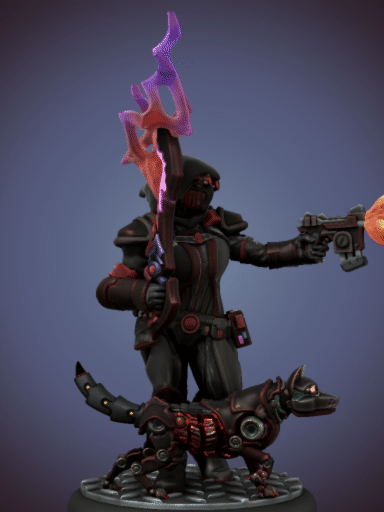
The combination of Inquisitorial zeal and the Data Gathering & Manipulation skills of an Unbound Infocyte is a potent mix, and Sigma Stroke Niner was able to deduce the existence of Cawl's Primaris project prior to it's official unveiling, including the initial reports (later proven wrong) that these new marines would be near-immune to the various chapters' gene-seed flaws.
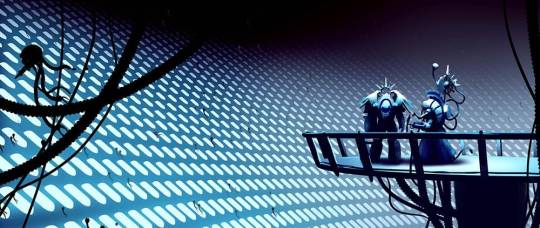
She brought this finding back to her compartmentalized Inquisitorial Conclave, who decided that it warranted further investigation in the utmost secret. They also came to the verdict that if there were going to be a next generation of Marines, it was ill-advised to let them all be under the sole control of a lone member of the Mechanicus, no matter how intelligent and skilled. The Inquisitor Infocyte was authorized for a new assignment, to divert one of Cawl's secret remote caches of Primaris for study by an independent Mechanicus Arch-Genetor. This diverted batch of Primaris would also secretly serve as a fail-safe contingency for the eventuality of Cawl's project posing a threat to the Imperium, giving the Inquisition an independent stock of Primaris from which a counter-force could eventually be raised from.
A Vogelist Arch-Genetor, Kristiana Rozza, was chosen and allowed to review the collected research intercepted from Cawl. She hypothesized that the supposed flaw resistance may be possible to be backported to Firstborn Marines, especially if aspirants were screened for favorable genomes. A Rogue Trader, Jareth Keldon XXIV, was secretly commissioned to locate an obscure world to conduct experiments with this new "Marine Chapter", his payment being a full company's worth of these new marines being seconded to his flagship to assist with his explorations.


The planet that the Rogue Trader was able to locate for the project, Etherion IV, was a pre-Imperium Dark Age of Technology -Remnant human colony Industrial-Hive not on standard navigational charts due to surrounding warp-storms (these warp-storms would result in several temporal anomalies and the planetary system having an asteroid belt littered with Space Hulk wreckage from the past and even future).
Etherion IV's planetary culture consists of a Capitalist Corporate Oligarchy with proxy wars of genegineered Abhuman Hive-Gangs, called "Splicer Gangs". The wide variety of genegineering among segments of the native population gave Arch-Genetor Rozza a broad canvas of potential aspirants for her various experiments in Astartes creation.
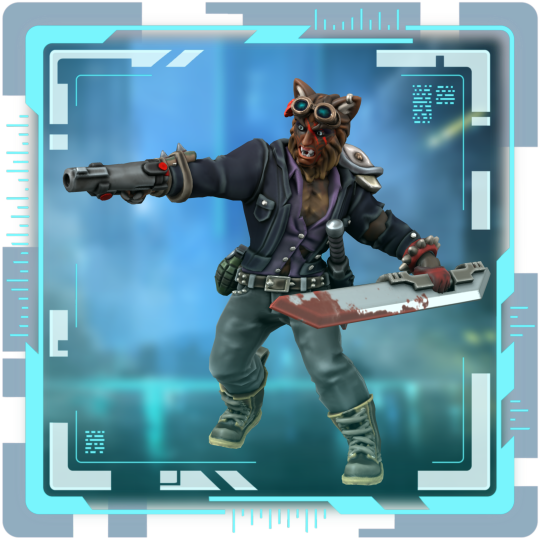
In addition to the stasis Primaris extracted from Cawl's secret cache, a small amount of Astartes genetic tithings were diverted so that Firstborn Marines could also be made. The primary source was the Space Wolves, but some Blood Angels Progenoids were also in the mix of what could be illicitly redirected. While carrying the Geneseed mutations of these parent Chapters, the Marines created from this supply were entirely divorced from the homeworlds of Fenris and Baal, carrying no cultural context for any Chapter-specific flaws that develop.
The Stormwolves are not a full strength Chapter, and lack much of the heavier hardware. What vehicles and aircraft they do have are often archived museum pieces whose storage records were "misfiled" or unused prototype schematic designs pulled from mothballs at various Forge Worlds to then be manufactured locally on Etherion IV.
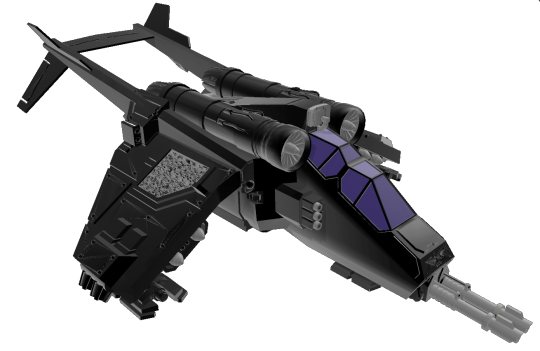
Due to their covert "founding", the Stormwolves are also at risk of being misidentified as a Renegade Chapter or even surviving Heresy-era Blackshields. Or they would be, if they hadn't been trapped by a severe time-distorting Warp Storm keeping them isolated while time ran at widely disparate rates inside and outside of the storm. This Storm lasted several centuries and did not fully dissipate until the middle of the Indomitus Crusade.
Due to the research-based charter that was their unofficial founding, the Stormwolves have a non-Codex structure.
Chapter Leadership is referred to as "Control" and consists of Firstborn Marines that have not been experimented on. They assist the Arch-Genetor with her experiments, and also lean hard into the monastic side of being an Astartes. Their unique power armor color scheme is often not fully visible due to cloaks, robes, tabards, capes, and hoods in black, red, and royal purple. Control also almost exclusively carries high-powered relic combi-weapons.
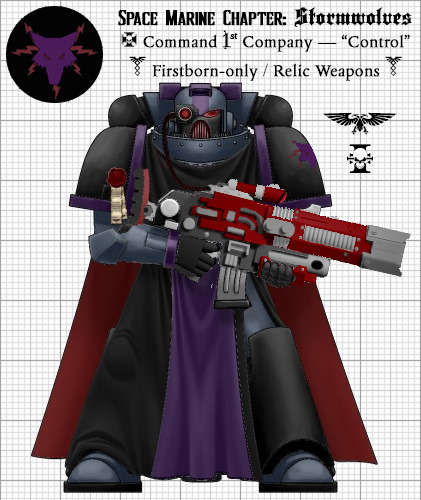
Then come the Bloodstorm Squadrons which are batches of Firstborn who have had their Geneseed experimented on. Their armor scheme is a variation of Control's colors, with more red. Conscripts from the Abhuman Splicer Gangs are also assigned to Bloodstorm as they wait to see if they get chosen for Marine implants.
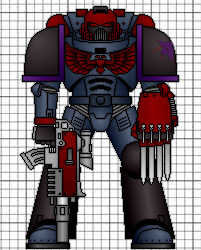
Both these Firstborn sections are outnumbered by the Primaris Marines of the Stygian Wolves Division. Sporting a much darker paint scheme, the Stygian Wolves are a mostly Phobos-armored Vanguard Force and are typically grouped into 5 Marine squads, one of which is always a Helix Adept. These squads are either designated as Obscuratus Pack if they are equipped with Omni-Scramblers and Comms Arrays, or as Phantom Pack if they eschew this extra equipment in favor of mobility. The Helix Adepts in both types of Pack are charged with monitoring the genetic health of the rest of their squad in addition to all their other normal Helix Adept duties. Both Obscuratus and Phantom Packs wield the locally produced Etherion-Pattern Marksman Bolt Carbine, a design that takes cues from both the Instigator Bolt Carbine and the Stalker Pattern Bolter. Occasionaly, smaller fire teams armed with either Bolt Sniper Rifles or Las-Fusils are also employed.
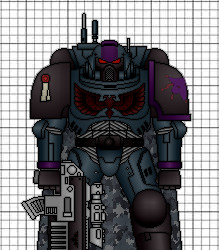
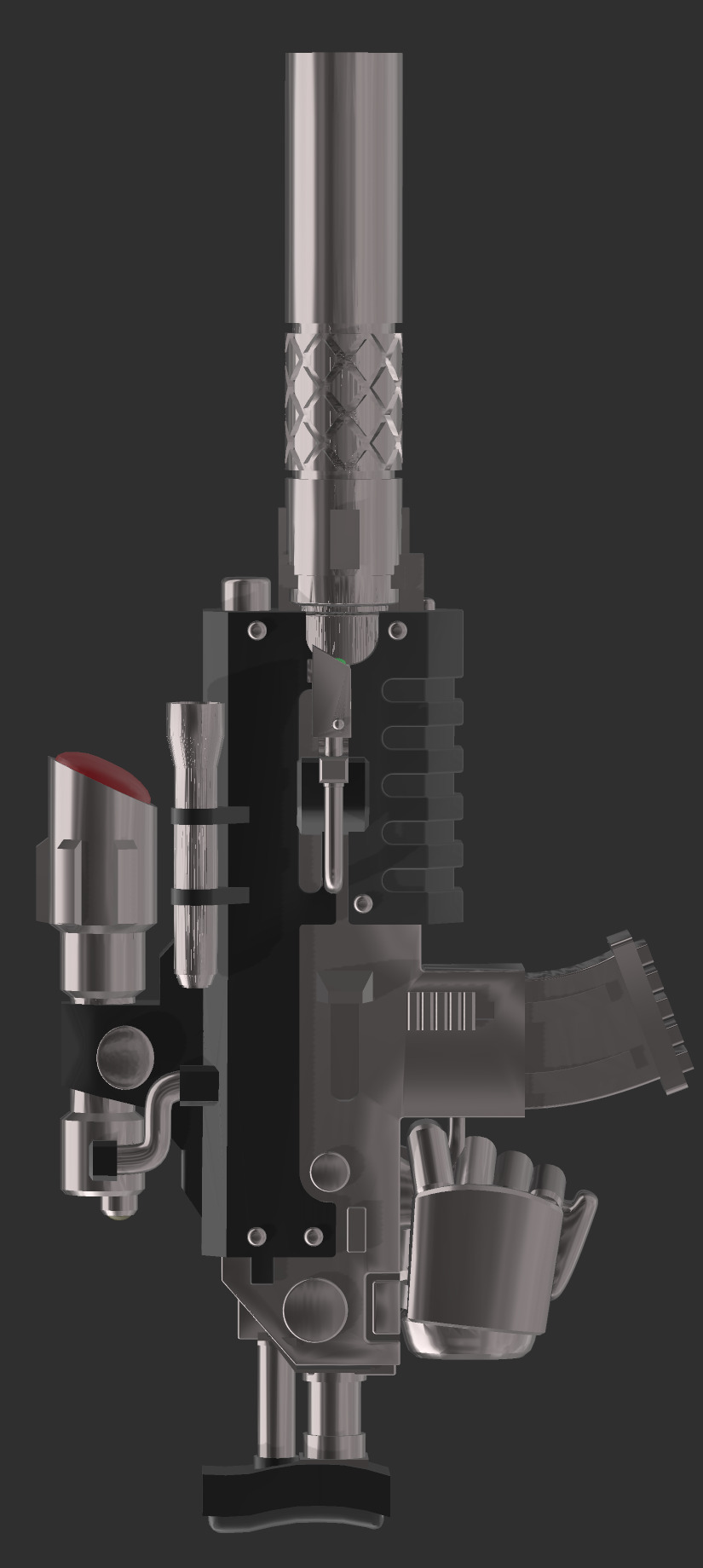
Uncommonly, the Stygian Wolves also use Tacticus Configuration of Mk. X Power Armor, frequently in combination with Plasma Incinerators in a Hellblaster-style loadout, in squad formations lead by an Apothecary and known as Sterilization Detail. Very rarely will the Intercessor-syle loadout with the Cawl Pattern Bolt Rifle be used; this equipment profile is typically reserved for in boarding actions. Rarest of all are the Gravis-armored Multi-Melta wielders of the Extermination Crew.
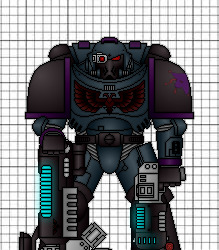
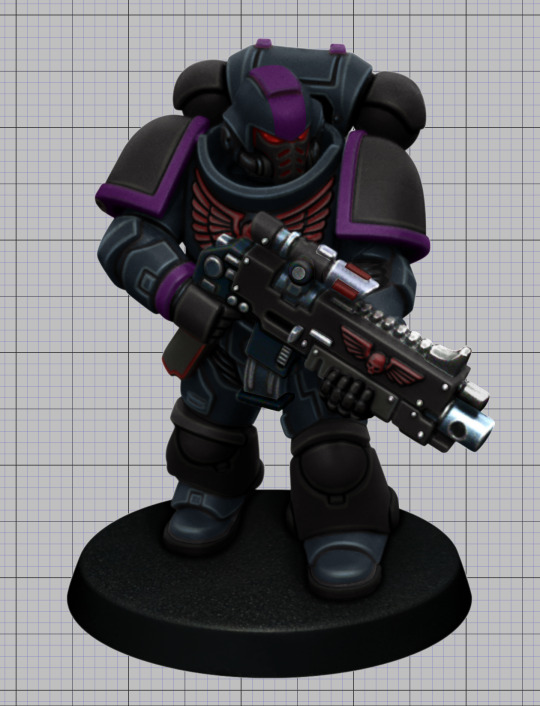
The devotion to monitoring their own genetics in the pursuit of constant improvement is not just limited to the Stygian Wolves Division, as Control is also very Apothecary heavy, with many Apothecaries assigned to a leadership role by the title of Helix Keeper. Helix Keepers also frequently assume the command position over Bloodstorm Squads. The Helix Keepers, Apothecaries, and Helix Adepts of the Chapter take the place of Chaplins, as the Stormwolves have no Chapter Cult of their own, their worship is directed solely towards genetic experimentation. The quest for purity also has weeded out most all forms of random mutation, including the Psyker genes, so the Chapter also lacks Librarians. (The deliberate genengineering of potential aspirants is an exception to the purity mandate.)
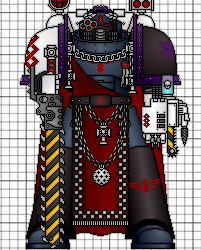
The Stormwolves often fight alongside Auxiliaries draw from the troops assigned to Rogue trader Keldon's fleet. Keldon's Elite Personal Guard, the 1st Selene Contingent, is the most powerful of these. They provide an additional avenue for Arch-Genetor Rozza to experiment on enhancements that fall outside of the Inquisitorial charter to research Space Marine genetics and the Primaris Project. The true nature of these side experiments by the Arch-Genetor are shrouded in secrecy for unknown reasons. While there is always the possibility that the sub-project could be something considered to be Heretical by either the Mechanicus or the Imperium, Sigma Stroke Niner is aware of the details, and permits the work to continue. It is of note that the 1st Selene Contingent is an all-female unit.

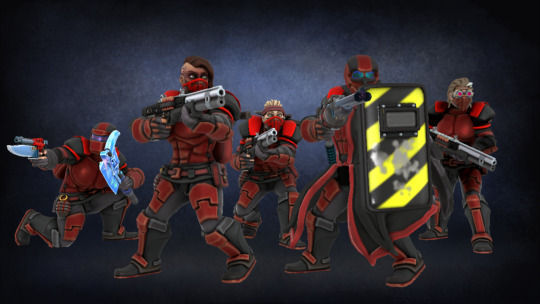
#wh40k#Warhammer 40k#Warhammer 40000#Space Marines#Homebrew Space Marine Chapter#Stormwolves#Adeptus Astartes#Games Workshop#Hero Forge
21 notes
·
View notes
Text

Five articles published in the journal "Nature Communications" report different analyses of data collected by NASA's DART spacecraft and the Italian Space Agency's LICIACube nanosatellite that accompanied it on its mission that ended with the collision with Dimorphos, a small satellite asteroid of Didymos, which occurred on September 26, 2022. Various teams of researchers with members in common offered possible reconstructions of the processes that led to the formation of the pair of asteroids and their characteristics. These studies are connected to the defense of the Earth from asteroid impacts.
15 notes
·
View notes
Text
Final Fantasy VII Rebirth details regions, exploration, world intel, mini games, and combat
■ Regions of the World
Join your friends as you journey across a wide, open world. Each region feels unique, boasting different enemies to encounter and different methods of traversing its terrain. Search high and low to unlock new quests and unearth rare treasures.

Let’s take a look at some of these regions:
Grasslands
A vast, verdant expanse of land rich with mako. These plains are dotted with smaller outposts and planetary fonts waiting to be discovered. Adventure lies beyond the swamplands, but you’ll need to rent a chocobo from the local ranch if you want to cross.
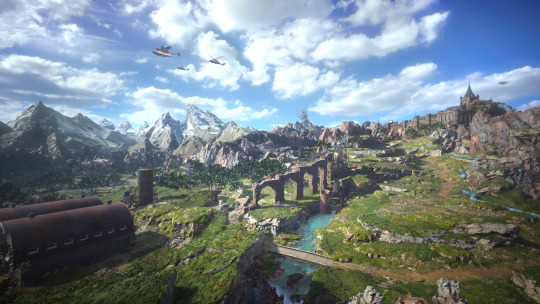
Under Junon
Former capital of the eponymous republic, this once-bustling port town fell into decline after its destruction at the hands of Shinra. All that remains now is a desolate fishing village where the displaced citizens have taken refuge.
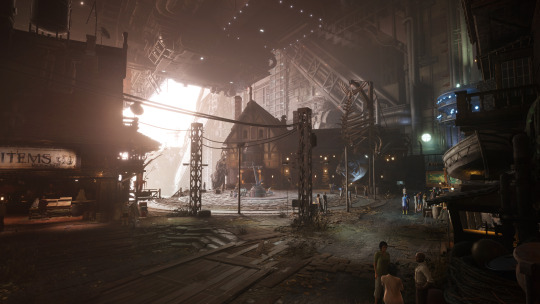
Junon
Previously a beacon of hope and economic prosperity, the former capital of the republic now slumbers beneath the waves. After its takeover, Shinra repurposed the city into its second-largest outpost, a fortified stronghold replete with an underwater reactor.

Gold Saucer
A “gilded paradise” constructed over the Corel Desert, this Shinra-owned facility uses copious amounts of mako to power its state-of-the-art attractions. The park draws in tourists from around the world and keeps them entertained from dawn to dusk to dawn again.

■ Exploration
Countless quests and other diversions await you on your journey. A brief stop along your adventure could lead you to unearth useful treasures or make other fascinating discoveries.
Chocobo Ranches
Each region boasts ranches where you can exchange golden plumes for new chocobo gear. Customize your bird’s ensemble to create a steed that’s all your own.

Item Transmuter
Collect the materials outlined in transmutation formulae to create items. Transmuting items will improve your craftsmanship and in turn unlock new formulae with which you can obtain rare items.
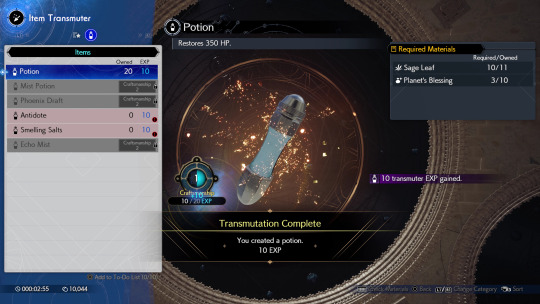
Odd Jobs
Cloud works as a mercenary, taking on odd jobs from people in need wherever he goes.
Check the noticeboards at major outposts if you’re looking for work.
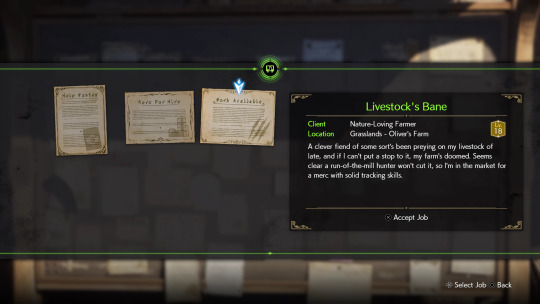
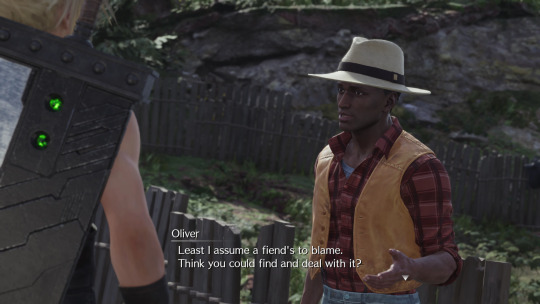
■ World Intel
Help Chadley deepen his understanding of this world by completing research requests in each region. Gathering intel will unlock new locations to explore, greatly expanding your horizons. Chadley will also develop new materia based on the data you have collected.
Chadley (voiced by Sean-Ryan Petersen in English, Shuuichirou Umeda in Japanese)

Once an employee in Shinra’s Research and Development Division, Chadley has left it and Midgar behind, thanks to Cloud. Now, he aims to reactivate the world’s defunct communications towers to facilitate his understanding of the planet, for which he needs the party’s assistance.
Remnawave Towers
Activating the old republic’s remnawave towers in each region will open up new research opportunities.
When visiting a location for the first time, try seeking out these towers: they will not only help you get your bearings, but also offer a great view of the surrounding area.

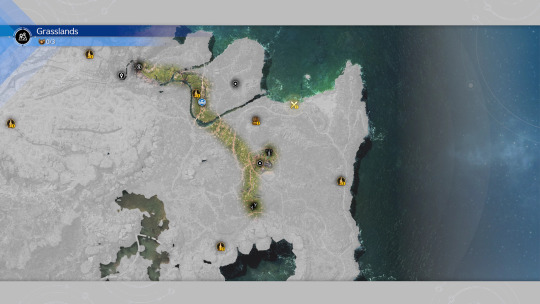
Combat Assignments
Seek out rare fiends in their natural habitats and gather intel on special assignments to unlock new challenges in Chadley’s combat simulator.
These missions will test your mental mettle, though, so be sure to fight strategically.

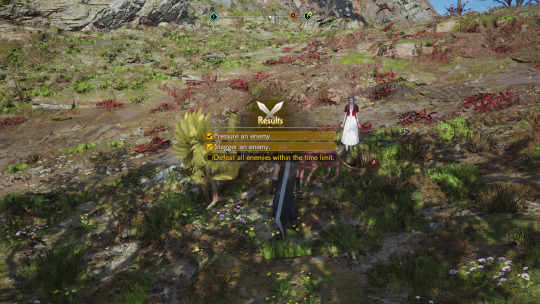
Excavation Sites
When a chocobo smells treasure, a “?” will appear above its head. Following the scent might lead you to unearth a valuable item or a new transmuter formula.
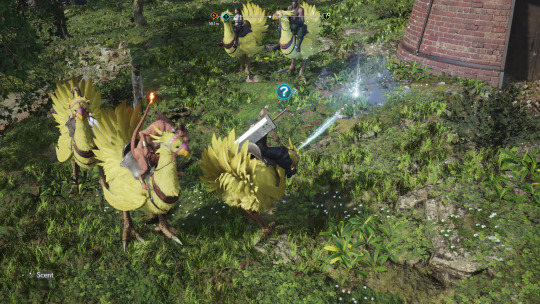
Chocobo Stops
Repair fallen chocobo stop signs to transform them into fast travel spots. If you see a stray chocobo chick, be sure to follow it: not only will it lead you to one of these stops, but it will reward you with a golden plume once your repair work is complete.

Fast Travel
Fast travel allows you to jump instantly to previously visited towns, chocobo stops, and other locations. Use this feature to pick up the pace of your adventures.
■ Mini Games
Not only stories and battles, but all kinds of unique elements of fun await players. Enjoy the numerous mini games available across the game’s world.

Piano Performance
After obtaining a piece of sheet music, head to a piano and try your hands at performing it. These pieces feature music from the game, with some proving to be quite the challenge. If you would rather improvise, however, you can perform original music in the free play mode.

Queen’s Blood
Queen’s Blood is a strategic card game that has skyrocketed to popularity. Players take turns placing cards on the board in an attempt to overpower their opponent by accumulating power in each lane. Collect cards and utilize their abilities to claim the crown as QB royalty.

Moogle Mischief
A minigame to bring mischievous Moogle kids back to their mogstools.
The Moogle kids will attack you in every possible way, so be careful not to be caught off guard by their cute smiles.
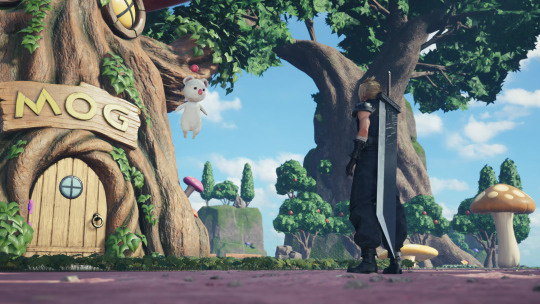

■ Combat
Next, let’s take a fresh look at Final Fantasy VII Rebirth‘s intense battle system, and some of the awesome things you can do.
Limit Break
The limit gauge gradually fills as you take damage or stagger foes.
Once the gauge is full, you can unleash devastating limit breaks unique to each party member.
Some synergy abilities can increase your limit level, enabling the usage of even more powerful attacks.

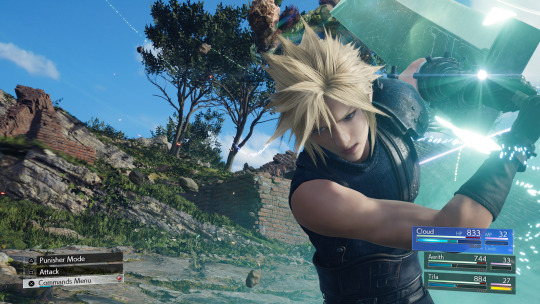

Synergy Ability
Two party members team up to activate useful abilities without consuming ATB. These commands can be executed while blocking, and provide a wide array of beneficial effects. Each pairing has their own unique set of abilities; some deal damage, while others offer support.

Final Fantasy VII Rebirth, the second game in the Final Fantasy VII remake trilogy, will launch for PlayStation 5 on February 29, 2024.
#Final Fantasy VII Rebirth#FFVII Rebirth#Final Fantasy 7 Rebirth#FF7 Rebirth#Final Fantasy VII Remake#FFVIIR#Final Fantasy 7 Remake#FF7R#Final Fantasy VII#FFVII#Final Fantasy 7#FF7#Final Fantasy#Square Enix#video game#PS5#long post#late post#very late post
41 notes
·
View notes
Text
Tarkaan Prime: Home of the Tarkaans
1. General Information
Planetary Classification: High-Gravity Terrestrial World
Location: Tarkaan Sector, Mid-Rim Galactic Region
Orbital Position: 4th planet in the Tarkaan System
Gravity: 1.8x Earth standard (Tarkaan physiology adapted for extreme gravity)
Atmosphere: Dense nitrogen-oxygen mix, high in trace metals and particulates
Surface Conditions: Mountainous terrain, volcanic regions, and arid plateaus with deep subterranean cave networks
Native Intelligent Species: Tarkaans (Tarkaanis Primaris)
2. Planetary Environment & Geography
A. High-Gravity, Harsh Conditions
Tarkaan Prime is known for its extreme gravitational forces, nearly twice that of Earth, making non-Tarkaan species struggle to survive without exoskeletal support.
The thick atmosphere diffuses solar radiation, giving the sky a deep copper hue during the day.
B. Mountainous & Volcanic Landscapes
The planet is covered in immense mountain ranges and volcanic plateaus, where Tarkaans built their first settlements within natural fortress-like structures.
Active volcanoes provide natural geothermal energy, used for heat and power generation in Tarkaan cities.
C. Subterranean Caverns & Hidden Lakes
Below the surface, vast cave networks contain underground rivers and bioluminescent flora, providing natural reservoirs in an otherwise harsh and arid environment.
These caves house ancient Tarkaan ruins, remnants of early warrior civilizations that used them for combat training, meditation, and sanctuary during planetary conflicts.
3. Tarkaan Civilization & Cultural Structure
A. Strength-Based Hierarchy
Tarkaan society is built on honor, resilience, and strength, with leaders chosen through a combination of tactical intelligence, combat skill, and endurance trials.
Unlike many warrior cultures, Tarkaans value strategic discipline over brute force, ensuring that their leaders are not just the strongest, but also the wisest.
B. The Warrior Clans & House Systems
Tarkaan Prime is divided into several Great Houses, each specializing in a specific discipline, such as tactics, metallurgy, medicine, or engineering.
House Ka’reth (Kaelen’s lineage) is one of the most renowned tactical warrior houses, training elite strategists, commanders, and security enforcers.
Although Tarkaans are warriors by nature, they do not seek war unnecessarily—conflict is viewed as a means of sharpening one's discipline, rather than an end in itself.
C. The Proving Rites – The Path to Adulthood
Young Tarkaans undergo The Rites of Proving, a grueling set of physical, mental, and strategic trials designed to test their endurance, adaptability, and combat prowess.
Those who succeed earn full recognition within their house, while those who fail may choose to train further or pursue non-combat professions.
The trials take place in hostile environments, from the volcanic Wastes of Karesh to the subterranean Caverns of Zurrak, ensuring that only the most resilient warriors emerge victorious.
4. Planetary Wildlife & Ecosystem
A. The Karvath Beasts – Apex Predators
Massive, reptilian creatures with dense, obsidian-like armored plating and razor-sharp mandibles.
Tarkaans train against Karvath beasts as a test of endurance, often using strategy rather than brute force to defeat them.
B. The Vaross Serpents – Bioluminescent Cave Dwellers
These semi-intelligent, luminescent serpents navigate Tarkaan’s underground river systems.
Considered sacred in Tarkaan tradition, they are viewed as symbols of wisdom and patience, and some warriors meditate in their presence to hone their instincts.
C. The Ash-Wing Rocs – Skyborne Titans
Massive avian creatures that soar through Tarkaan’s volcanic updrafts, capable of sensing seismic activity before it occurs.
Only the most elite Tarkaan warriors attempt to tame and ride these beasts, a practice reserved for those seeking the highest honor within their house.
5. Scientific & Technological Advancements
A. High-Gravity Engineering & Reinforced Infrastructure
Tarkaan cities are constructed using reinforced alloys capable of withstanding immense gravitational stress.
Their technology is designed for high durability and functionality, with exoskeletal support systems used for off-world adaptation.
B. Geothermal Energy Utilization
The planet’s volcanic activity is harnessed for power, making Tarkaan Prime nearly energy-independent.
Unlike some warrior civilizations, Tarkaans have advanced scientific infrastructure, particularly in energy efficiency and metallurgy.
C. Tactical Warfare Training & Military Research
While not an expansionist species, Tarkaans have developed highly advanced combat AI, strategy simulations, and cybernetic enhancement programs for elite warriors.
Their military academies are among the most respected in the galaxy, training not only Tarkaans but also elite warriors from allied species.
6. Relationship with Other Species & the Galactic Community
A. Trade & Resource Exchange
Tarkaan Prime is known for producing some of the most durable alloys in the galaxy, making it a key supplier of reinforced starship hull materials and weapon components.
They maintain strict trade agreements, ensuring that their technology is not misused by expansionist factions.
B. Diplomatic Tensions & Warrior Culture Misunderstandings
Some species view Tarkaans as overly aggressive or rigid, failing to understand that their warrior traditions are not about conquest, but discipline and personal growth.
Despite their harsh reputation, Tarkaans value honor and loyalty, making them staunch allies once trust is established.
C. Relationship with the Solar Nexus Space Station
Tarkaans serve as high-ranking security officials and combat instructors, ensuring that diplomatic zones remain protected from potential threats.
Kaelen Veythos, a notable Tarkaan, serves as a Senior Security Officer, bringing his species’ tactical expertise to the intergalactic station.
7. Unexplored Mysteries & Potential Conflicts
A. The Ruins of the Lost Tarkaan Clans
Deep within the Caverns of Zurrak, ancient ruins have been discovered, suggesting that an unknown Tarkaan civilization may have existed long before recorded history.
Some suspect that these ruins may contain knowledge or technology lost to time, leading to conflicting views on whether they should be explored or left undisturbed.
B. The Silent Moon – A Forbidden Region
Tarkaan Prime has a mysterious, lifeless moon, known as Vareth-Kai, which is off-limits even to the Tarkaan people.
It is believed that something ancient and dangerous resides there, though no official records confirm why it remains untouched.
C. The Rift Scar – A Growing Planetary Anomaly
In recent years, an unstable gravitational rift has begun forming near the equatorial region, affecting seismic stability.
Some fear that this anomaly may be a natural planetary shift, while others suspect external interference, possibly linked to ancient technology buried beneath the surface.
8. Final Thoughts – The Significance of Tarkaan Prime
A world of extreme gravity, resilience, and discipline, shaping one of the galaxy’s most formidable warrior cultures.
A technologically advanced civilization balancing tradition and modern scientific development.
A planet of untapped secrets, with ancient ruins and mysterious anomalies that could change everything.

#intergalactic#original characters#original fiction#solar nexus#solar nexus space station#oc#space station#roleplay#space station role play#space station rp#Planet Report#Planetary Research and Data Collection#Tarkaan Prime
0 notes
Text
Circumbinary systems contain planets that orbit around two stars in the center instead of just one, like in our solar system. Circumbinary planets orbit around both stars at once. The discovery, led by researchers at the University of Birmingham, is reported in the journal Nature Astronomy. The newly discovered planet is called BEBOP-1c, after the name of the project that collected the data. BEBOP stands for Binaries Escorted By Orbiting Planets. The BEBOP-1 system is also known as TOI-1338. In 2020, a circumbinary planet, called TOI-1338b, was discovered in the same system using data from NASA's TESS space telescope, to which the Birmingham team also contributed. That planet was discovered with the transit method and was noticed because it passed in front of the brighter of the two stars on several occasions.
Continue Reading
82 notes
·
View notes
Text



NASA Studies Reveal Hidden Secrets About Interiors of Moon, Vesta
Analyzing gravity data collected by spacecraft orbiting other worlds reveals groundbreaking insights about planetary structures without having to land on the surface.
Although the Moon and the asteroid Vesta are very different, two NASA studies use the same technique to reveal new details about the interiors of both.
In the lunar study, published May 14 in the journal Nature, researchers developed a new gravity model of the Moon that includes tiny variations in the celestial body’s gravity during its elliptical orbit around Earth. These fluctuations cause the Moon to flex slightly due to Earth’s tidal force — a process called tidal deformation — which provides critical insights into the Moon’s deep internal structure.
Using their model, the researchers produced the most detailed lunar gravitational map yet, providing future missions an improved way to calculate location and time on the Moon. They accomplished this by analyzing data on the motion of NASA’s GRAIL (Gravity Recovery and Interior Laboratory) mission, whose spacecraft, Ebb and Flow, orbited the Moon from Dec. 31, 2011, to Dec. 17, 2012.
In a second study, published in the journal Nature Astronomy on April 23, the researchers focused on Vesta, an object in the main asteroid belt between Mars and Jupiter. Using NASA’s Deep Space Network radiometric data and imaging data from the agency’s Dawn spacecraft, which orbited the asteroid from July 16, 2011, to Sept. 5, 2012, they found that instead of having distinct layers as expected, Vesta’s internal structure may be mostly uniform, with a very small iron core or no core at all.
Both studies were led by Ryan Park, supervisor of the Solar System Dynamics Group at NASA’s Jet Propulsion Laboratory in Southern California, and were years in the making due to their complexity. The team used NASA supercomputers to build a detailed map of how gravity varies across each body. From that, they could better understand what the Moon and Vesta are made of and how planetary bodies across the solar system formed.
“Gravity is a unique and fundamental property of a planetary body that can be used to explore its deep interior,” said Park. “Our technique doesn’t need data from the surface; we just need to track the motion of the spacecraft very precisely to get a global view of what’s inside.”
Lunar Asymmetry
The lunar study looked at gravitational changes to the Moon’s near and far sides. While the near side is dominated by vast plains — known as mare — formed by molten rock that cooled and solidified billions of years ago, the far side is more rugged, with few plains.
Some theories suggest intense volcanism on the near side likely caused these differences. That process would have caused radioactive, heat-generating elements to accumulate deep inside the near side’s mantle, and the new study offers the strongest evidence yet that this is likely the case.
“We found that the Moon’s near side is flexing more than the far side, meaning there’s something fundamentally different about the internal structure of the Moon’s near side compared to its far side,” said Park. “When we first analyzed the data, we were so surprised by the result we didn’t believe it. So we ran the calculations many times to verify the findings. In all, this is a decade of work.”
When comparing their results with other models, Park’s team found a small but greater-than-expected difference in how much the two hemispheres deform. The most likely explanation is that the near side has a warm mantle region, indicating the presence of heat-generating radioactive elements, which is evidence for volcanic activity that shaped the Moon’s near side 2 billion to 3 billion years ago.
Vesta’s Evolution
Park’s team applied a similar approach for their study that focused on Vesta’s rotational properties to learn more about its interior.
“Our technique is sensitive to any changes in the gravitational field of a body in space, whether that gravitational field changes over time, like the tidal flexing of the Moon, or through space, like a wobbling asteroid,” said Park. “Vesta wobbles as it spins, so we could measure its moment of inertia, a characteristic that is highly sensitive to the internal structure of the asteroid.”
Changes in inertia can be seen when an ice skater spins with their arms held outward. As they pull their arms in, bringing more mass toward their center of gravity, their inertia decreases and their spin speeds up. By measuring Vesta’s inertia, scientists can gain a detailed understanding of the distribution of mass inside the asteroid: If its inertia is low, there would be a concentration of mass toward its center; if it’s high, the mass would be more evenly distributed.
Some theories suggest that over a long period, Vesta gradually formed onion-like layers and a dense core. But the new inertia measurement from Park’s team suggests instead that Vesta is far more homogeneous, with its mass distributed evenly throughout and only a small core of dense material, or no core.
Gravity slowly pulls the heaviest elements to a planet’s center over time, which is how Earth ended up with a dense core of liquid iron. While Vesta has long been considered a differentiated asteroid, a more homogenous structure would suggest that it may not have fully formed layers or may have formed from the debris of another planetary body after a massive impact.
In 2016, Park used the same data types as the Vesta study to focus on Dawn’s second target, the dwarf planet Ceres, and results suggested a partially differentiated interior.
Park and his team recently applied a similar technique to Jupiter’s volcanic moon Io, using data acquired by NASA’s Juno and Galileo spacecraft during their flybys of the Jovian satellite as well as from ground-based observations. By measuring how Io’s gravity changes as it orbits Jupiter, which exerts a powerful tidal force, they revealed that the fiery moon is unlikely to possess a global magma ocean.
“Our technique isn’t restricted just to Io, Ceres, Vesta, or the Moon,” said Park. “There are many opportunities in the future to apply our technique for studying the interiors of intriguing planetary bodies throughout the solar system.”
TOP IMAGE: This artist’s concept shows the Moon’s hot interior and volcanism about 2 to 3 billion years ago. It is thought that volcanic activity on the lunar near side (the side facing Earth) helped create a landscape dominated by vast plains called mare, which are formed by molten rock that cooled and solidified. Credit: NASA/JPL-Caltech
CENTRE IMAGE: These views of the Moon’s near side, left, and far side were put together from observations made by NASA’s Lunar Reconnaissance Orbiter. Credit: NASA/JPL-Caltech
LOWER IMAGE: NASA’s Dawn mission obtained this image of the giant asteroid Vesta on July 24, 2011. The spacecraft spent 14 months orbiting the asteroid, capturing more than 30,000 images and fully mapping its surface. Credit: NASA/JPL-Caltech/UCLA/MPS/DLR/IDA
12 notes
·
View notes
Text


Field study synopsis page
Title: A Field Study on Sentinel Ships
Abstract
This study examines the enigmatic Sentinel ships that patrol the stars. As an explorer and researcher, I have observed these vessels in various systems, documenting their behavior, technology, and potential origins. Whiterock aims to provide insight into their purpose and how their presence influences the galactic ecosystem.
Introduction
The Sentinels are an omnipresent force in the galaxy, serving as both protectors and enforcers of some mysterious universal order. Among their many manifestations, Sentinel ships represent a specialized fleet that enforces their strict protocols in space. While planetary Sentinels regulate activities on land, Sentinel ships respond aggressively to spacefaring violations, including unauthorized mining, piracy, or direct aggression. Understanding these entities is critical for survival and the development of diplomatic strategies.
Methods of Observation
Data for this study was collected through firsthand encounters with Sentinel ships. Observations were conducted from the cockpit of a heavily modified explorer class starship equipped with advanced scanners. Encounters ranged from non-hostile patrols to direct combat engagements in various star systems. I also analyzed debris from downed Sentinel ships to gain insights into their technology.
Findings
1. Appearance and Design
Sentinel ships are sleek and angular, often resembling predatory creatures. Their designs suggest a focus on both intimidation and aerodynamic efficiency. Each ship is equipped with glowing energy cores, which appear to serve as both power sources and weak points during combat.
2. Behavior and Tactics
Sentinel ships are not inherently hostile but become aggressive when they detect violations of their protocols. They often arrive in escalating waves, beginning with small interceptor craft and escalating to heavily armed frigates if resistance continues. Their tactics are highly coordinated, suggesting either centralized control or advanced AI algorithms governing their actions.
3. Technology and Composition
The debris of Sentinel ships reveals a blend of organic and mechanical components. Their technology seems to rely on a unique material known as Pugneum, which exhibits self-repairing properties. Advanced weapon systems, including pulse lasers and plasma cannons, make them formidable adversaries. Their materials suggest a level of technological sophistication far beyond most known species in the galaxy.
4. Purpose and Origins
The exact purpose of the Sentinel fleet remains speculative. Theories range from their role as enforcers of an ancient ecological balance to tools of a hidden creator species. Their presence in every system and their reaction to resource exploitation suggest a primary directive of maintaining order and preventing excessive disruption to galactic ecosystems.
Discussion
The Sentinels' spaceborne manifestations highlight a complex and potentially ancient system of governance within the galaxy. Their advanced technology and unyielding vigilance suggest they are not merely reactive but part of a broader, more purposeful network. Whether their goals align with the preservation of life or the suppression of unchecked expansion remains unclear.
Survival in their presence requires careful planning, from evasion strategies to targeted combat tactics. However, the possibility of deeper communication or diplomacy with the Sentinels could unlock secrets about the galaxy's true history and its hidden power structures.
Conclusion
The Sentinel ships are an enduring mystery, embodying the duality of order and destruction. While they are a source of peril for explorers, they also offer an opportunity for a deeper understanding of the universe's interconnected systems. Future research should focus on deciphering the origins of the Sentinels and uncovering their ultimate purpose in the galaxy.
Notes on Further Research
Continued studies on planetary Sentinels and Sentinel archives may provide additional context for their behaviors and objectives. Moreover, engaging with other explorers to compare encounters and findings could illuminate patterns in their deployment and actions across different regions of space.
*Researcher: [Name Redacted for Security Reasons]*
*Location: [Classified Star System]*
#exploration#galaxies#nms#no mans sky#odyalutai#research#science#space#spaceships#Sentinel#WhiteRock Research Facility
4 notes
·
View notes
Link
While a NASA probe heads for an asteroid known as Psyche, telescopes have been probing it to prepare for the arrival. Data from the James Webb Space Telescope has found something quite unexpected on the surface – hydrated molecules and maybe even water! The origin of the water is cause for much speculation, maybe it came from under the surface or from chemical interactions with the solar wind! Asteroid Psyche was discovered in 1852 by the Italian astronomer Annibale de Gasparis. It was named after the Greek goddess of the soul who was born mortal and married Eros. It measures 225 km across and is one of the most massive objects in the asteroid belt between Mars and Jupiter. Most of the asteroids in the belt are composed of rock and ice but Psyche seems to be different being largely composed of metals, perhaps the exposed core of a protoplanet that lost its outer layers. Psyche is of immense interest to study because it provides an opportunity to study planetary cores which are usually inaccessible. Illustration of the metallic asteroid Psyche. Credit: Peter Rubin/NASA/JPL-Caltech/ASU Aptly named Psyche, the probe launched by NASA has already started its 3.5 billion km journey to the asteroid, due to arrive in August 2029. With its solar panels deployed, the probe measures 25 metres by 7.3 metres, about the size of a tennis court. It has a mass of 2,747 kg and is powered by five solar panel arrays. Once arrived at Psyche they can generate about 3 kilowatts of power. While the probe is enroute, telescopes on Earth and in space have been exploring Psyche. Observations in different wavelengths of light have provided information that will aid and support the data collected by the Psyche spacecraft. The study was led by Dr. Stephanie Jarmak from the Southwest Research Institute and it was their observations that confirmed the hydroxyl molecules on the surface. Image of NASA engineers preparing the Psyche spacecraft for launch within a clean room at the Astrotech Space Operations Facility located near the NASA Kennedy Space Center. Psyche is scheduled to launch in October 2023 on a SpaceX Falcon Heavy rocket from historic Launch Complex 39A at Kennedy. (Credit: NASA/Ben Smegelsky) The data, which was collected using the James Webb Space Telescope revealed the telltale signs of hydroxyl but stopped short of explaining where they came from. There are two possible explanations and we can look to the origin of asteroids to understand them. They are the leftovers from the formation of planets and their make up is determined by the location in the solar nebula from which they formed. If the hydroxyl formed locally without interference from external process then it might suggest that Psyche is not a planetary core remnant. It might be that Psyche simply formed at a distance that volatile compounds like water condense to form solids like ice before migrating. An alternative model explains the variability of the molecule distribution across the surface. This might indicate that impacts from carbonaceous chondrites (like the meteorites often found on Earth) could have provided the water molecules that have been observed. It seems that for now, we will have to wait until the arrival of the Psyche spacecraft in 2029 to unravel the mystery. If we can get a better understanding of the origin of the asteroid Psyche it will help us to learn more about the distribution of elements in the nebula that the planets formed from. In particular, understanding more about the distribution of water will help us to develop a better insight to the origins of life. Source : SwRI-Ked Team Finds Evidence of Hydration on Psyche The post There Might Be Water on the Surface of the Metal Asteroid Psyche appeared first on Universe Today.
3 notes
·
View notes
Text
𝚂𝚞𝚋𝚓𝚎𝚌𝚝 𝚈𝟽𝟶𝟶𝟶𝟶𝟶𝟷𝟶
SSD: Professor Hojo DATE: XX/XX/XXXX
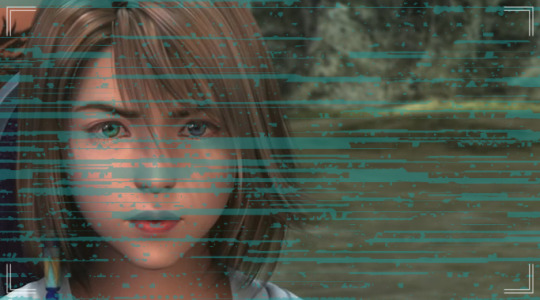
Subject Name: Yunalesca; or "Yuna" as she prefers. However, I simply call her 'Subject Y' to keep conversaations short and my analysis centered. Time is of the essence! Age: 23 Height: 5'3" Eye: Heterochromia; Green right, blue left. (Perhaps the result of Ancient and human intermingling?) Weapon: Staff, or a sophisticated rod which grants the user proper focus for stronger spell casting. Equipped Materia: (Restore=All, Heal) (Aero/aera/aeroga=All) (Revive, Water/Watera/Waterga)
Biographay, or what is known thus far: Subject Y is an Ancient—or rather, "half" Ancient on the subject's biological father's side. (Does this mean Subject Y's talents only half compare to that of a full-blooded Ancient?) She was captured in tow alongside her father with willing cooperation. (ShinRa-grade firearms are quite convincing!) Subjects "Y" and "B" (B200000010; forename "Braska") thus graduated into a project witheld in my viscinity who I paired together to observe their techniques in the art of communing with the voices of the planet. Subject Y was much too young to adequately commune—a consequence of her half-bred blood? Worthless girl. Hence, Subject B allowed us to observe his talents and how the Ancient's use their gift via constructing a telepathic link. The results were fascinating!
LOG #1: A discovery! Subject Y has shown a small act of awakening. A "Planetary Guardian" (about 20 cms in length and height. Spherical. Image is foggy, almost ethereal. Dark blue with blots of inky-black saturation swirling around). "Kimahri" she's named it. A familiar, it seems. Though it was one step forward, Subject Y has shown next to nothing in her so-called talents. She's yet to forge a strong link with the planet. And yet, it gifts her a small allowance of protection to bar my data collection. Syringes labeled with the subject's code (full of a special concoction to speed up her prowess...and other samples from spliced DNA to give her that extra kick) have been misplaced or shattered by none other than the familiar itself.
After months of wasted research, a recent sighting of Ancients piqued my curiosity. Though, they were in the care of my lesser superior, I would reprimand Professor Gast for harboring his experiment and fathering a daughter with Ifalna years prior. I'll see to it I take them off of his hands, as a show of goodwill. In addition, it would do ShinRa's Science Division well to dismiss my current subjects back to their domain while running from the care of my latest creation: A SOLDIER-mutant hybrid spliced with Malboro DNA! He's quite the fiesty tentacle-weilding abomination with a taste for humanoid beings (considering a dozen of my finest infantrymen stationed to observe him have suddenly gone missing...) I hypothesize Ancient beings would suffice his appetite just as well.
LOG #2: Subjects Y and B have been disposed. END EXPERIMENT.
16 years later
A peculiar turn of events. It seems she may yet live, and with an abudence of abilities to weild. My! How she has grown! She conjures healing abilities without the use of materia! And I've noticed her competence to manifest deities—or "aeons" as she refers to them—to fight in her stead without said materia. She has finally awakened. I will get my hands onto Subject Y. Though, not to cause the specimen to become wary, I will simply discharge a few men to be my "eyes" for the time being.
LOG #3: For my next project, I shall figure out how to rip those deities from her body, and poke around their unusual forms. Perhaps mixing their DNA with fiend DNA laced with a dose of mako before returning them back into her person and observe what may happen to her pets and physical body.
Do my ears decieve me, or did Subject Y suggest the planet beckons her to give up her physical form in exchange for peace? What rubbish! Should she return to the planet there is absolutely nothing that can be done once the body is gone. And yet... there may be some underlying possibility of some phenomena we've yet to know.
Interesting! Very interesting Subject Y! I shall make arrangements to ensure her will is not to be disturbed.
Go forth and give your life to the planet, and my research!
((I'm stealing this from one of my other posts and re-doing it slightly to give a good run-down how things are going with Yunie in this realm.)
Yuna is “half ancient” on her father’s side. He was the second to last person to know all the stories and secrets about his people which he hammered into Yuna before he was killed trying to save his daughter via subjected to one of Hojo's creations.
Hojo declared Yuna worthless to his subjections because her planet spirit guardian, Kimahri, kept interfering with his work when she was young. And since he obtained a “better” specimen one day (Aerith) he “let them go”—a ploy to subject them to one last experiment: a mutated SOLDIER (and infantrymen) to chase them down and kill them.
When Braska is killed, he miraculously keeps Yuna alive by smearing her pink palid cheeks in his blood to fake her death. It was enough to deter the fiend somehow, supposedly not quite starving for flesh? Or perhaps it still retained a semblence of his humanity under all of his horrors? Nobody would know, as it would be killed and covered up sometime down the line.
Weeks go by. A retired SOLDIER named Jecht stumbles upon a malnourished young girl clinging to a decomposing body for warmth. She was in the middle of nowhere, yet the area he found her in was disturbed. There was nary a doubt in his mind ShinRa had something to do with it all. Against his better judgement, Jecht takes her in, clothes and feeds her and raises her alongside his son as if she were his own. Yuna eventually grows into a fine young woman, but her duty is calling to her… the planet is calling for her…
(She is more in-tune with her abilities now that's she's older, so she can still converse with, well, dead people. and the planet itself by simple concentration.)
One day Yuna leaves home leaving a note and implores Sir Jecht not to look for her. Unbeknownst to him, she is on a mission to protect the planet by way of giving up her physical form to unleash a hellish fury upon ShinRa’s mako syphoning reactors. It’s the only way she thinks she can save what was left of humanity.
Thus, she travels around as disguised as a healer and fiend exterminator (mixed with an unusual ability to conjure powerful aeons without the use of summoning materia.)
Hojo catches wind of this, and comes to the conclusion little Yuna didnt die that fateful day. Instead, he watches her. Oh how she has grown! And awakened a new ability, it seemed! Perhaps one bestowed to her by the planet itself? Ah! she is not so worthless afterall!
For now. He sends “eyes” to monitor her movements while running some “tests” in the background.
10 notes
·
View notes
Text
Headcanuary Challenge - One Headcanon per Day
Day 6: Escape
_________________________________________________
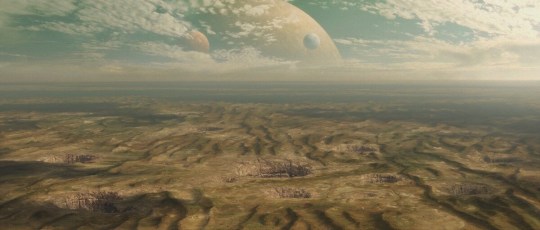
From what archaeologists have gathered, the first large-scale settlements of Pau'an into Utai cave cities were the result of at least three ecological and social disasters.
Records of the precise events and their order are scarce, as paper-making techniques and flimsy had not yet made it to Utapau. The record keeping mission of the Rock Vulture clan had not yet begun, and traditions were largely still passed orally through song and dance.
Some artifacts remain of the two extinct Plainsmen groups, leading researchers to believe at least one of the clans went extinct during this time, while one had perished thousands of years earlier (though the ultimate fate of this group is hotly debated).
The first known incident, backed up by data collected in the great continental divide rift, was a massive shift in the planetary crust. The core ocean, once a great sea with portions above the surface, began to recede through the cracks, dropping sea levels and moving shorelines.
Former sandy sea floor suddenly uncovered, with wide expanses of flat, superheated land, gave rise to the first known hyperwind storms on the planet, tearing up most long-term settlements from the surface.
The sudden drought and violent storms were in themselves ecologically disastrous, but the sea water filling the hollow portion beneath the planet's crust lead the limestone deposits to recede from below. Sinkholes large enough to swallow whole populations began to arise, and frequent earthquakes were taken as a sign of Spiritual unrest.
During this time, a rogue Plainsman Shaman, one said to be particularly gifted in his connection to the Spirits, was expelled from his clan for failing to please the divine. He gathered a following of outcasts into a Brunlai clan, exacting his revenge on the established clans through an extended war. It is thought that the remains of this Shaman's clan were either killed off, or were the first to unify with the Utai under the leadership of Timon Medon. Either way, the already suffering Pau'an population of the surface world began to dwindle, most picking up and moving to safer underground refuges.
End of Entry.
Previous Entry | Next Entry | Ride or Die Series
_________________________________________________
@oh-three @nobody-expects-the-inquisitorius
5 notes
·
View notes